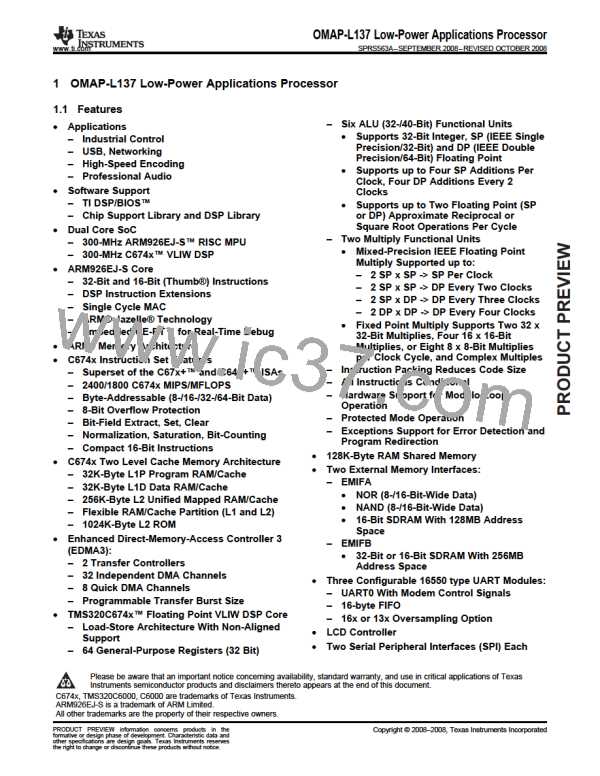OMAP-L137 Low-Power Applications Processor
SPRS563A–SEPTEMBER 2008–REVISED OCTOBER 2008
www.ti.com
6.17 ECAP Peripheral Registers Description(s)
The OMAP-L137 device contains up to three enhanced capture (eCAP) modules. Figure 6-41 shows a
functional block diagram of a module. See the OMAP-L137 Applications Processor DSP Peripherals
Overview Reference Guide. – Literature Number SPRUGA6 for more details.
Uses for ECAP include:
•
•
•
•
Speed measurements of rotating machinery (e.g. toothed sprockets sensed via Hall sensors)
Elapsed time measurements between position sensor triggers
Period and duty cycle measurements of Pulse train signals
Decoding current or voltage amplitude derived from cuty cycle encoded current/voltage sensors
The ECAP module described in this specification includes the following features:
•
•
•
•
•
•
•
•
•
32 bit time base
4 event time-stamp registers (each 32 bits)
Edge polarity selection for up to 4 sequenced time-stamp capture events
Interrupt on either of the 4 events
Single shot capture of up to 4 event time-stamps
Continuous mode capture of time-stamps in a 4 deep circular buffer
Absolute time-stamp capture
Difference mode time-stamp capture
All the above resources are dedicated to a single input pin
The eCAP modules are clocked at the SYSCLK2 rate.
The clock enable bits (ECAP1/2/3/4ENCLK) in the PCLKCR1 register are used to turn off the eCAP
modules individually (for low power operation). Upon reset, ECAP1ENCLK, ECAP2ENCLK,
ECAP3ENCLK, and ECAP4EN CLK are set to low, indicating that the peripheral clock is off.
164
Peripheral Information and Electrical Specifications
Submit Documentation Feedback

 TI [ TEXAS INSTRUMENTS ]
TI [ TEXAS INSTRUMENTS ]